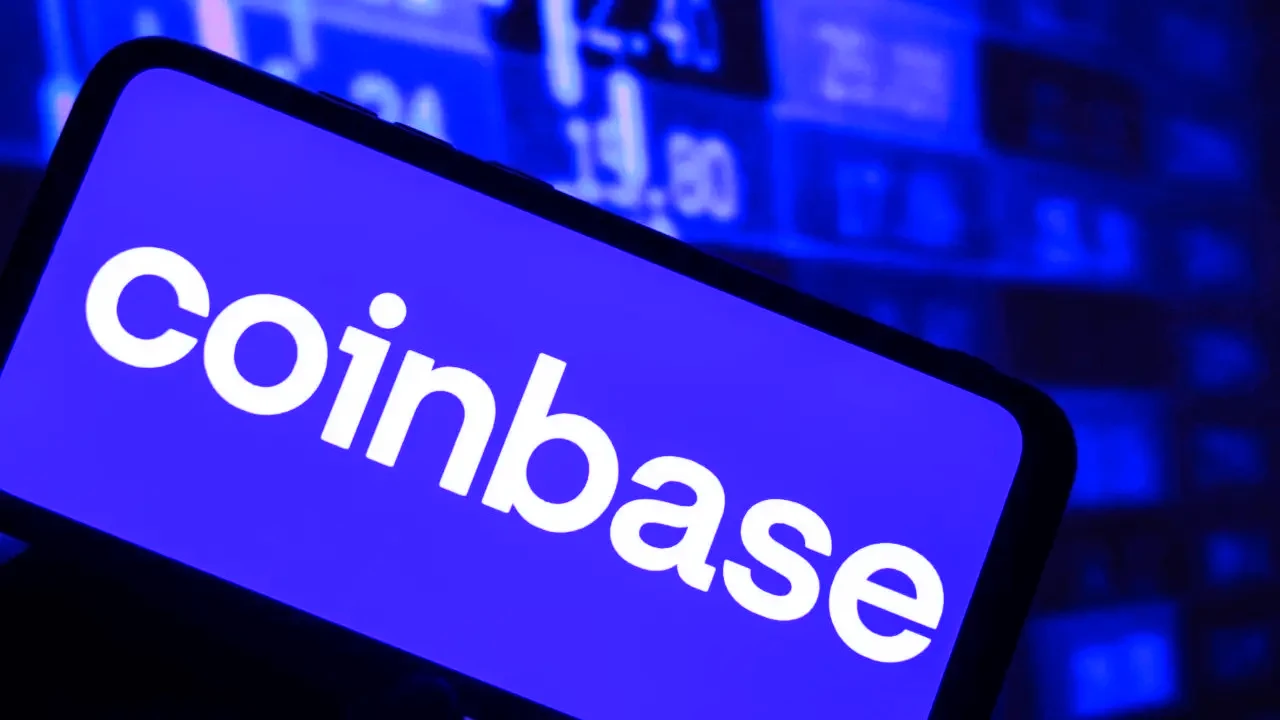San Francisco-based crypto company Coinbase has launched a new web app for its wallet. This app aims to give users a single place to manage all their on-chain assets. The app aims to make things easier for users by giving them a complete view of their crypto holdings across different wallets and blockchains.
Table of Contents
ToggleCoinbase Launches Web App to Enhance Crypto and NFT Management
The new Coinbase Wallet web app lets users link multiple wallets and see their crypto, NFTs, and decentralized finance (DeFi) positions all in one place. This means they won’t need to use manual spreadsheets or switch between different browser tabs anymore.
The app supports many wallets, such as smart wallets, Metamask, and Phantom. It has an easy-to-use interface for trading over 2 million tokens across eight different blockchains. Key features include a complete view of assets, the ability to connect various wallets, and tools for creators to mint and share NFTs directly on the platform.
“By consolidating your wallets and providing a comprehensive 360-degree view of your portfolio, we aim to reduce inefficiencies and frustrations,” Coinbase shared this information with Bitcoin.com News on Thursday. “Plus, with the simplicity of smart wallets, users can get on-chain and engage in minting, creating, or trading in seconds.”
conclusion
FAQs
What is Coinbase?
Coinbase is one of the largest and most popular cryptocurrency exchanges globally, offering a platform where users can buy, sell, and store a wide range of digital currencies. Founded in 2012 and based in San Francisco, Coinbase has become a key player in the crypto industry, known for its user-friendly interface and robust security measures. It supports numerous cryptocurrencies, including Bitcoin, Ethereum, Litecoin, and more, catering to both individual investors and institutional clients. Coinbase also provides additional services such as wallet storage, crypto trading tools, and educational resources to help users navigate the world of cryptocurrencies effectively.
What are the requirements for Coinbase?
To use Coinbase, you generally need to meet these basic requirements:
- Age and Location: You must be at least 18 years old to create an account. Coinbase operates in various countries, so ensure it is available in your location.
- Identity Verification: Coinbase requires users to verify their identity. This usually involves providing a government-issued ID, such as a passport or driver’s license.
- Bank Account or Payment Method: You need a bank account or a payment method (like a credit/debit card) to fund your Coinbase account and buy cryptocurrencies.
- Internet Access: Since Coinbase operates online, you need access to the internet to use their platform.
- Compliance with Terms of Service: Agreeing with Coinbase’s terms of service and complying with their policies is essential for using their services legally.
These requirements ensure compliance with regulatory standards and help maintain the security of transactions on the platform.
In which countries is Coinbase available?
Coinbase operates in over 100 countries worldwide. While availability can vary slightly depending on local regulations and services offered, generally Coinbase is accessible in many major countries across North America, Europe, Asia, and Oceania. Some of the key countries where Coinbase is available include: United States, Canada, the United Kingdom, Australia, Germany,
France, Japan, Singapore, South Korea, Brazil.
It’s always a good idea to check Coinbase’s official website or contact their support for the most up-to-date information on availability in specific countries.
What is a Coinbase wallet?
A Coinbase Wallet refers to a cryptocurrency wallet provided by Coinbase that allows users to securely store, receive, and send various cryptocurrencies. It is distinct from a Coinbase account, which is primarily used for buying, selling, and trading cryptocurrencies on the Coinbase exchange platform.
Key features of a Coinbase Wallet include:
- Security: Coinbase Wallets are designed with strong security measures, including two-factor authentication (2FA) and secure private key storage.
- Multi-Currency Support: It supports a wide range of cryptocurrencies beyond those available for trading on Coinbase’s main platform.
- Decentralization: Unlike funds held on Coinbase’s exchange, funds in a Coinbase Wallet are under the user’s control, providing more control and access to blockchain-based assets.
- Ease of Use: The wallet interface is designed to be user-friendly, allowing easy management of multiple cryptocurrencies and interaction with decentralized applications (dApps).
- Integration: It integrates with the broader Coinbase ecosystem, enabling seamless transfers between Coinbase accounts and Coinbase Wallets.
Overall, a Coinbase Wallet provides users with a secure and versatile tool for managing their cryptocurrency assets outside of the centralized exchange environment.
How much money can you withdraw from Coinbase wallet?
Withdrawals of fiat currency from Coinbase Exchange accounts have a default limit of $100,000 per day.
Can I transfer money from Coinbase to my bank account? and how?
Yes, you can transfer money (fiat currency) from your Coinbase account to your linked bank account. Here’s how you can do it:
- Login to Coinbase: Go to the Coinbase website or open the Coinbase mobile app and log in to your account.
- Navigate to Accounts: Find and click on the “Accounts” tab or section. This will show you a list of your cryptocurrency and fiat currency balances.
- Select Your Fiat Wallet: Locate the fiat currency wallet (e.g., USD wallet) from which you want to withdraw funds.
- Withdraw Funds: Click on the “Withdraw” button next to your fiat currency wallet.
- Choose Bank Account: If you haven’t already linked your bank account, you’ll need to do so. Once linked, select the linked bank account to which you want to withdraw funds.
- Enter Withdrawal Amount: Enter the amount of fiat currency you wish to withdraw. Note that there may be withdrawal limits and fees associated with the transaction.
- Confirm Withdrawal: Review the withdrawal details, including any fees, and confirm the withdrawal.
- Processing Time: The processing time for withdrawals can vary depending on your bank and location, but it typically takes 1-3 business days for the funds to appear in your bank account.
It’s important to ensure that your bank account information is accurate and up-to-date to avoid any delays or issues with the withdrawal process.
What are the limits for Coinbase?
Coinbase imposes various limits depending on factors such as account verification level, payment method used, and transaction history. Here are some typical limits:
- Account Level Limits: These vary based on the level of verification you have completed. Higher verification levels usually mean higher limits.
- Buy/Sell Limits: These limit how much cryptocurrency you can buy or sell within a certain period, often daily or weekly.
- Deposit/Withdrawal Limits: Limits on how much fiat currency (like USD) or cryptocurrency you can deposit into or withdraw from your Coinbase account.
- Payment Method Limits: Limits may apply to the amount you can purchase using specific payment methods, such as credit/debit cards or bank transfers.
- Instant Buys Limits: Coinbase offers instant buys for some cryptocurrencies, which may have lower limits compared to standard buys.
These limits are in place to comply with regulatory requirements, prevent fraud, and ensure the security of user funds. Users can view and manage their specific limits within their Coinbase account settings.
What are web apps?
Web apps, short for web applications, are software applications accessed and used through a web browser over the internet. They run on remote servers rather than on the user’s local device, providing functionality similar to traditional desktop applications but with the convenience of being accessible from any device with a web browser and internet connection.
Key characteristics of web apps include:
- Accessibility: Users can access web apps from various devices (desktops, laptops, tablets, smartphones) with different operating systems, as long as they have a compatible web browser.
- No Installation Required: Unlike native applications that require installation on a device, web apps are accessed directly through a browser, eliminating the need for installation and updates on individual devices.
- Platform Independence: Web apps are typically platform-independent, meaning they can run on different operating systems (e.g., Windows, macOS, Linux) without modification.
- Centralized Updates: Updates and maintenance are managed centrally on the server side, ensuring all users have access to the latest version of the application simultaneously.
- Integration: Web apps can integrate with other web services and APIs, enabling seamless data exchange and interaction with external systems.
Moreover, examples of web apps include online banking applications, social media platforms (like Facebook and Twitter), email services (Gmail, Outlook), and productivity tools (Google Docs, Trello). They have become increasingly popular due to their accessibility, cross-device compatibility, and ease of deployment and maintenance compared to traditional desktop applications.
What is the difference between NFT and Crypto?
Cryptocurrency and NFT (Non-Fungible Token) are both types of digital assets, but they serve different purposes and have distinct characteristics:
- Cryptocurrency:
- Purpose: Cryptocurrencies like Bitcoin and Ethereum are primarily used as digital currencies for financial transactions.
- Fungibility: Cryptocurrencies are fungible, meaning one unit is interchangeable with another of the same type and value (e.g., one Bitcoin is equivalent to another Bitcoin).
- Use: They can be used for purchasing goods and services, trading on exchanges, and as investments.
- NFT (Non-Fungible Token):
- Purpose: NFTs represent ownership or proof of authenticity of a unique item or piece of content using blockchain technology.
- Non-Fungibility: Each NFT is distinct and cannot be exchanged on a one-to-one basis with another NFT, as they each have unique attributes and metadata.
- Use: NFTs are commonly used for digital art, collectibles, virtual real estate, music, and other forms of digital content. They enable creators to tokenize and sell their work, and buyers to own unique digital items.
In essence, while cryptocurrencies function as digital currencies and are fungible, NFTs are unique digital assets that represent ownership or proof of authenticity for specific items or pieces of content.







Leave a Reply